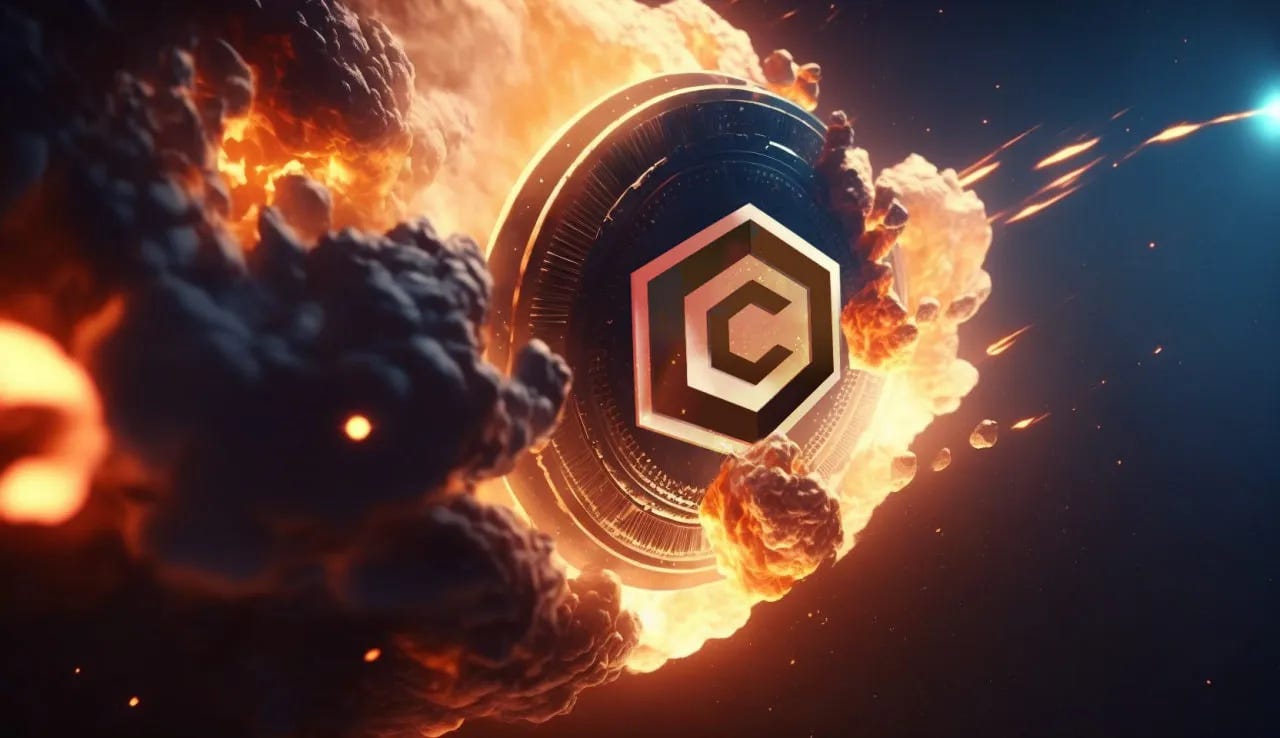CRO community Burn Proposal - Explainer Article
🔥 CRO burn milestone! Cronos PoS chain is about to initiate its inaugural as the community pool approaches 50M CRO.
Background
As many of you will recall, back in May, the Cronos PoS chain (formerly known as Crypto.org) passed a pivotal governance proposal aimed at slowing down CRO token inflation. This proposal introduced a burning mechanism to reduce the overall inflation rate. The approach involves allocating a share of tokens generated through future inflation to a "Community Pool," which are then periodically burned.
Official Burn Procedure Explained
The focus of today's article is on Step 5 in the token economic cycle diagram, which we've previously discussed. The key is to allocate a portion of tokens generated through emissions to a community pool, followed by a periodic burn. To perform this "burn," a "community pool spend" governance proposal must be initiated. Funds can then be transferred to a "dead" address which no one controls (i.e. cro1qqqqqqqqqqqqqqqqqqqqqqqqqqqqqqqqtcgxmv) , effectively reducing the available token supply and concluding a single burning cycle.
As of the time of writing, the community pool holds approximately 50 million of CRO, which brings us to our next topic.
So... wen burn?
We propose to initiate the CRO Burn when the community pool hits the 50M CRO threshold. Achieving this target will not only be a pivotal moment in the upgrade of our protocol but will also serve as a harbinger for a more balanced and resilient token economic model for Cronos PoS.
This inaugural CRO Burn is more than a one-off event; it's the first step in a broader, long-term strategy. As we plan for the future, we are exploring two potential paths to sustainably implement future CRO burns:
Threshold-Triggered Burn: With this model, each time the community pool's CRO balance reaches a specified amount— e.g. 25M CRO—a burn event will be triggered. This approach ensures that burning is responsive to the rate of token accumulation, thus directly impacting the circulating supply in a dynamic manner.|
Calendar-Governed Burn: Alternatively, we could stick to a time-based approach where burns occur at quarterly intervals, irrespective of how much CRO has been amassed in the community pool. This would provide a predictable and consistent burning schedule, which may be easier for token holders and market analysts to anticipate.
Each option has its merits, and the choice between them will set the course for how the Cronos PoS chain manages its token supply moving forward. We are eagerly looking forward to the community's insights and active participation in making this decision. Please visit the Cronos Discord server or Github to share your thoughts.
Looking Ahead
As we look ahead, the successful completion of this inaugural CRO Burn serves as a milestone in our mission to optimize the Cronos PoS chain's token economics. But this achievement is not an endpoint; rather, it's a catalyst for further exploration. Now that we've made strides in controlling supply-side factors, we're primed to delve into the mechanics of demand. The growth and expansion of our network not only set the stage for reducing inflation but also potentially steer us towards a deflationary path, making the vision of an 'ultra-sound' CRO increasingly attainable.
Ask what You can do for Cronos
We cannot stress enough the importance of active community participation in shaping the future of Cronos PoS chain. Engage with your delegated validators and take part in the proposal discussions on Discord and GitHub. Your voice is crucial in evolving a vibrant and enduring token economy that benefits all CRO holders and the broader ecosystem.
Previous blog post: A Straightforward Proposal to Slow Down CRO Inflation
Reference Links



